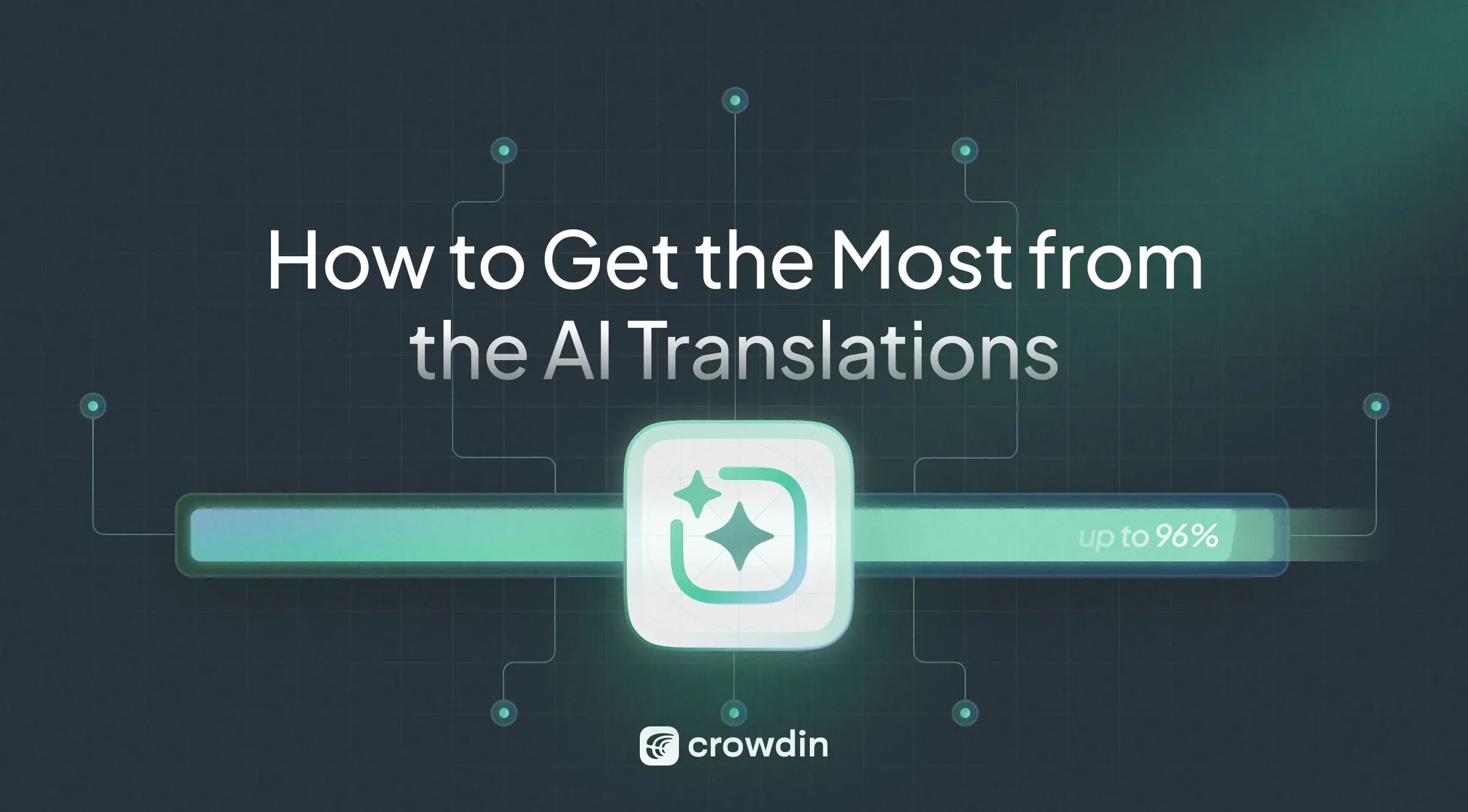Accurate translation is essential to facilitate global collaboration. Traditional translation methods often require significant time and resources. Combining Crowdin AI and human translations offers faster and more consistent results. By harnessing the power of AI, you can enhance its translation capabilities and optimize resource allocation.
Discover how AI revolutionizes the localization process and workflow by enhancing translation accuracy through contextual understanding in this article.
Crowdin and AI
Crowdin is an AI-based localization software that facilitates the process, offering AI to fine-tune models for personalized translation needs.
In the context of translations, AI typically refers to interacting with large language models through queries similar to chatting with a human – using prompts. Crowdin has been experimenting with AI translations for over a year, offering clients the AI Assistant app, which integrates into the system as a custom machine translation engine. However, it also features enhanced capabilities for configuring prompts to convey context and options for fine-tuning models using translation memories and dictionaries already existing in the project. Many companies, including Ajax Systems, have already tested its effectiveness.
We all know that AI is becoming an integral part of the localization process, and we have started an initiative to integrate this technology closer into our system. Now, AI is a native part of the platform, which will be actively expanded and offer new usage possibilities.
Context: The Key to Quality Translations
Uploading files for translation and comparing the quality between machine translation (MT) and AI may not yield significant improvement. However, leveraging AI’s capabilities can lead to a revolutionary change.
In some experiments, we have achieved translations where 95% do not require any corrections, showing the potential for improvement.
Pre-translation is a step-by-step process that involves a series of queries to the AI provider. In each query, we send sets of strings, typically around 50 at a time. This is because the AI’s response is limited by data volume, which is more strictly regulated than the prompt itself. In the prompt, we can provide extensive context for this set of strings.
The prompt will be individualized for each string. However, it will suffice for the manager to use placeholders that denote the source text, language pair, etc., so the system can replace them with actual values.
Crowdin supports multiple levels of context that can be used to instruct the machine on how to translate the content:
- Single-string level (context, terminology, TM).
- File-level (description from the manager, file name, etc.). The entire file can be used as context.
- Project level (high-level description of the ongoing project).
Adding context to the string improves the translation. You can adjust it slightly to find a more suitable translation. If the translation is very different from the direct translation, explaining it to the machine is more complicated. In this case, explicit examples work best when we directly indicate how to translate a specific term or when we convey part of the TM.
Small articles are translated quite qualitatively. For extensive documentation, it is worth specifying the file’s context and conveying a short summary of it. This is mainly for files that do not fit into the prompt.
Want to see a live demo of the platform?
Metadata of the Content
You can enhance your prompts by leveraging context information using a variety of available placeholders. Here’s an example of information that can be used for pre-translation:
- A collection of strings, including the string identifier (key), context, text, maximum length, and translations to other languages (if the translations placeholder is specified).
- The name of the project’s source language.
- The name of the target language for translation.
- The file name of the current segment.
- The file context of the current segment (can be provided via the file settings modal in the ‘Files’ tab).
- The source file content of the current segment.
- Translation Memory (TM) matches relevant to the current segment.
- All the glossary terms, relevant to the current segment.
- Translations of the current segment into the specified language.
- Crowdin project name.
- Project public description.
Of course, in addition to using the appropriate placeholders in your prompts, all this metadata must be filled out in your project at every level. After conducting a trial translation with AI, you can fill in the context for those strings that were inaccurately translated and then apply AI pre-translation to a broader range of languages to achieve good results.
New Way of Proofreading
In the previous workflow, content underwent pre-translation into all languages before undergoing human proofreading.
In the new workflow utilizing AI, proofreading is ordered after each translation into a new language. The AI utilizes the context provided by the previously translated languages to ensure accuracy in the new translation. This approach is more efficient than the previous workflow and does not incur additional work or costs.
A professional and high-quality translation into one language can significantly improve the quality of AI translations into other languages.
Try Pre-Translating with AI in Crowdin
You can use AI with a few clicks. It does not require registration in third-party services or expertise in writing prompts.
First, you will need a Crowdin or Crowdin Enterprise account. In the example of Crowdin, navigate to the AI section in your profile.
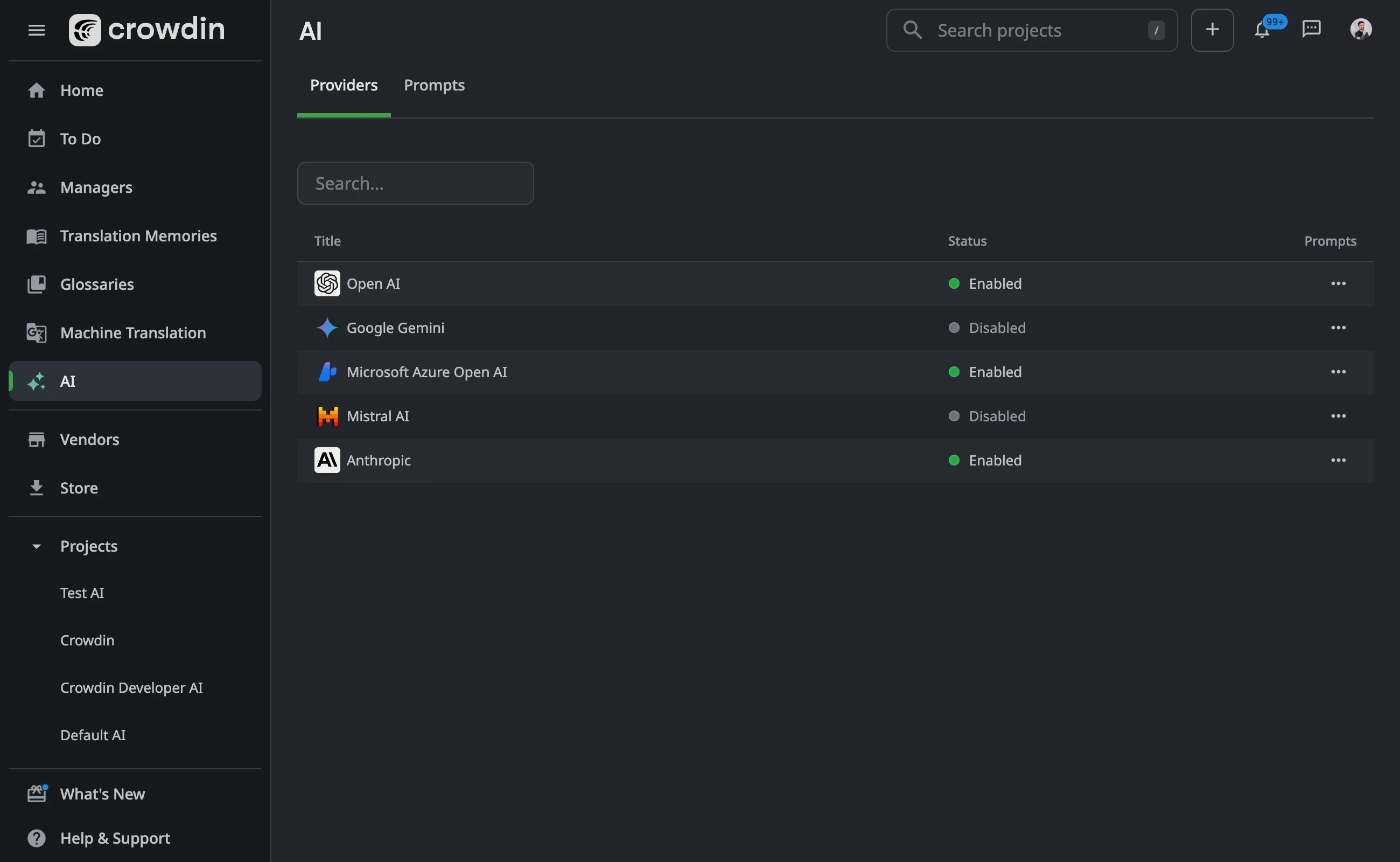
Crowdin AI Providers
We support the following providers:
- OpenAI
- Google Gemini
- Microsoft Azure OpenAI
- Mistral AI
- Anthropic
The list of providers will expand over time. You have two options: use your own key or choose the Managed Service to avoid the step of external registration.
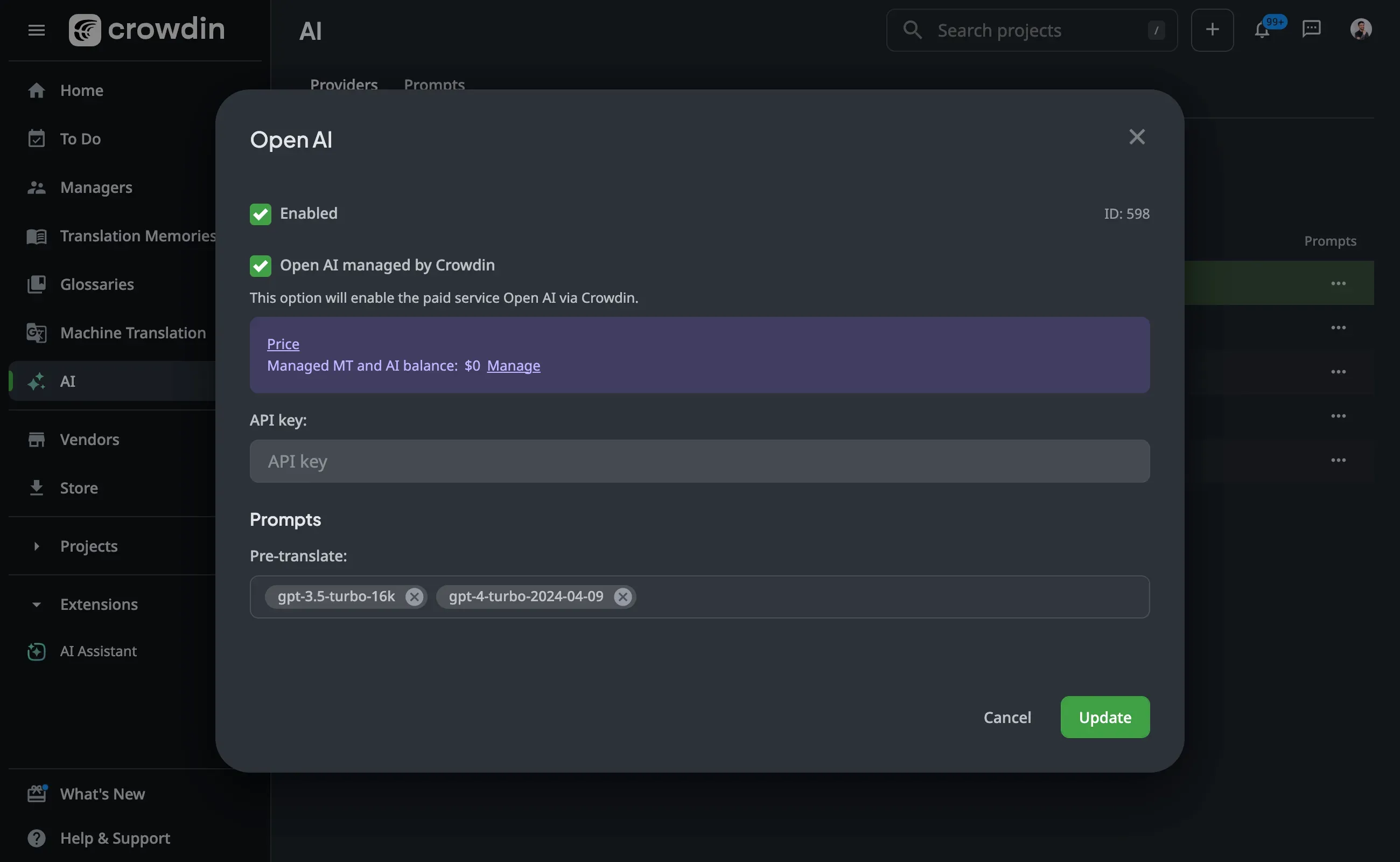
This option requires topping up your account.
We offer blog readers a $10 credit to try out our AI features
If you decide to proceed with your own key, you can select the models for pre-translation. To address data security concerns, Crowdin recommends using customer API keys for enhanced privacy and ownership.
After activating the provider, it will become available in the next tab, where you configure the prompt. In addition to choosing the provider, you need to select the model. Models vary in purpose and cost of use.
Note that in this section, you can only create prompts for your own projects. To connect a prompt to a project you manage, go to the project’s settings.
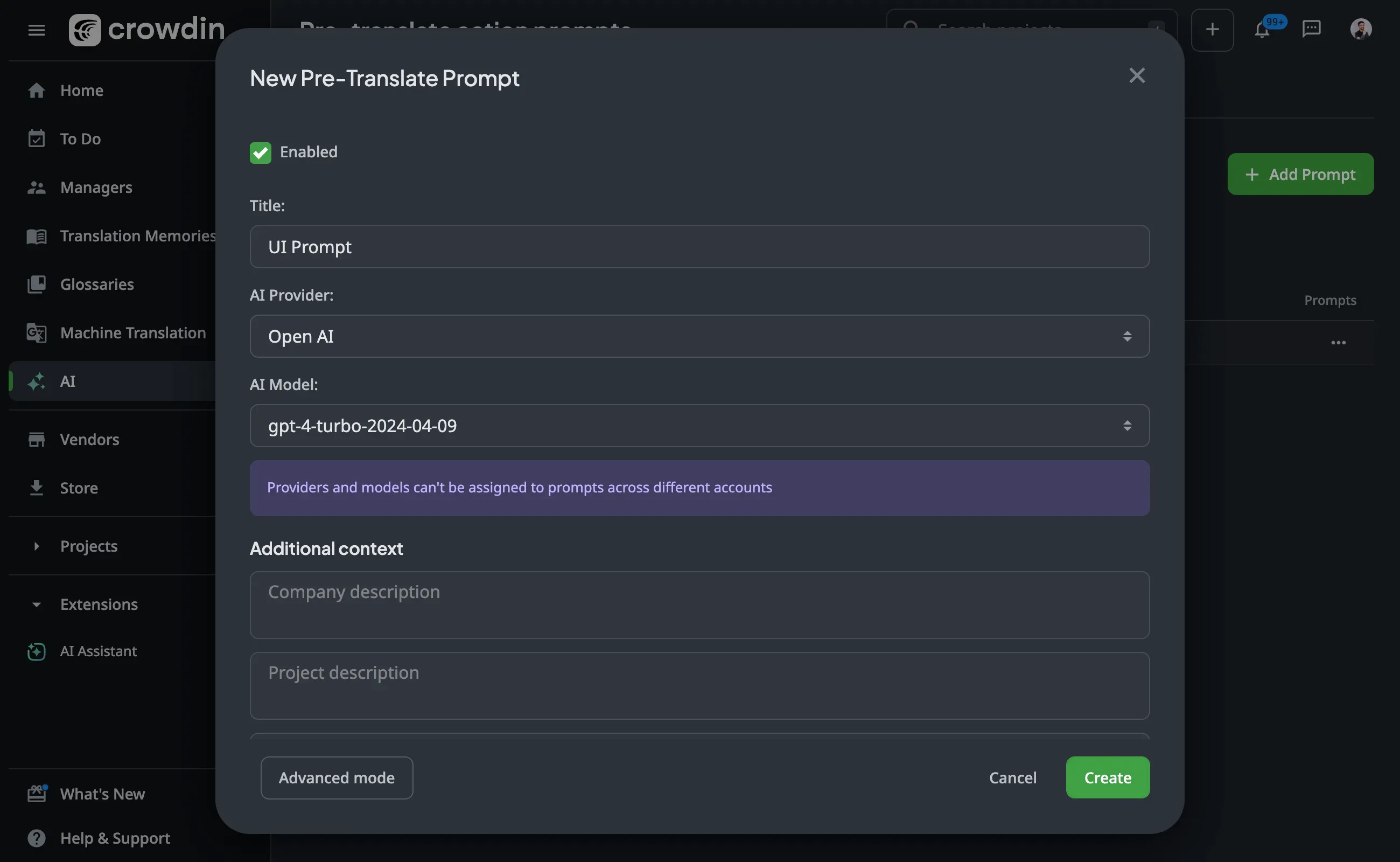
We handle the basic prompt writing; users must specify which data to include in the prompt. Note that the length of the prompt influences the cost of AI translation.
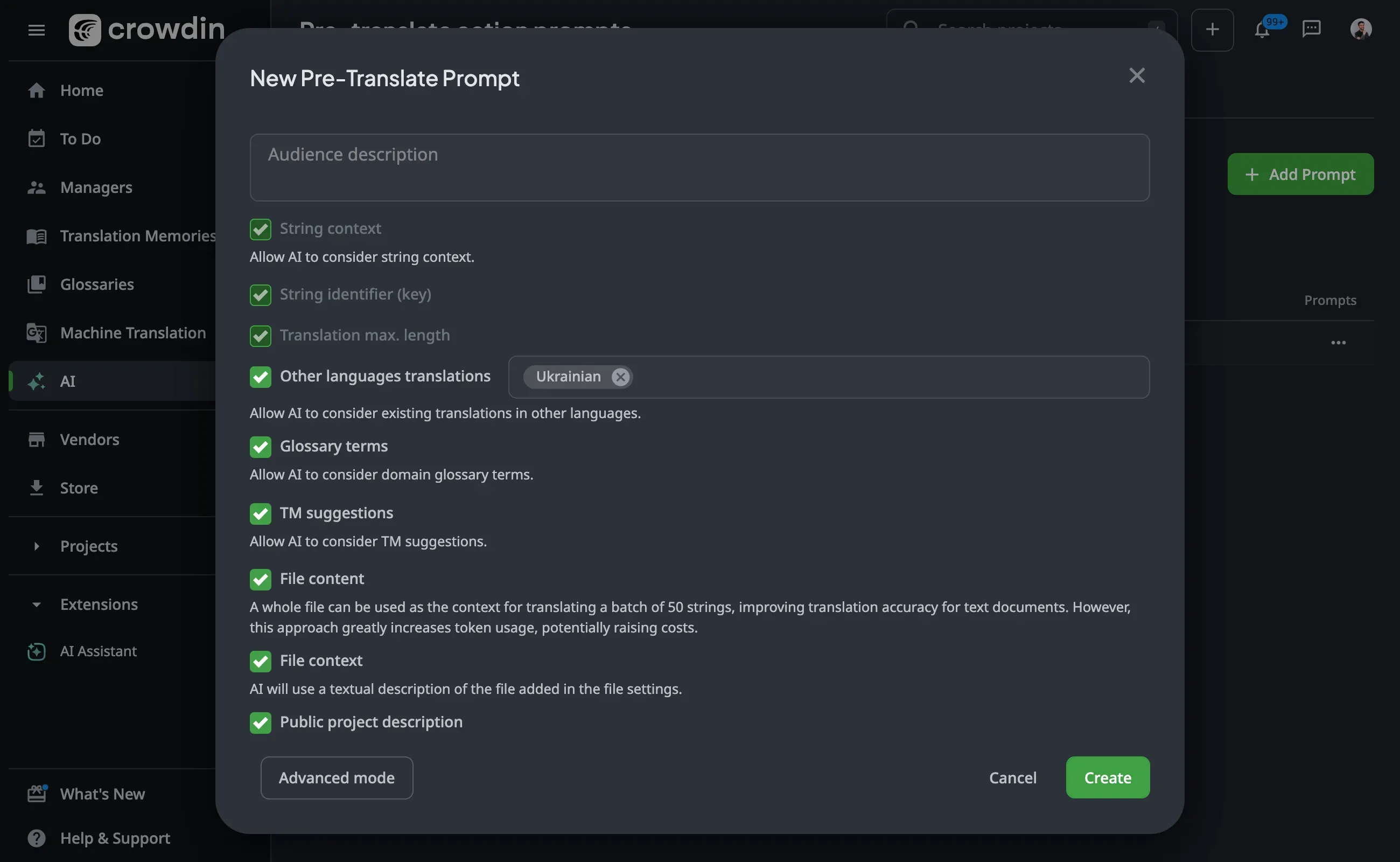
In advanced mode, you have complete control over the prompt.
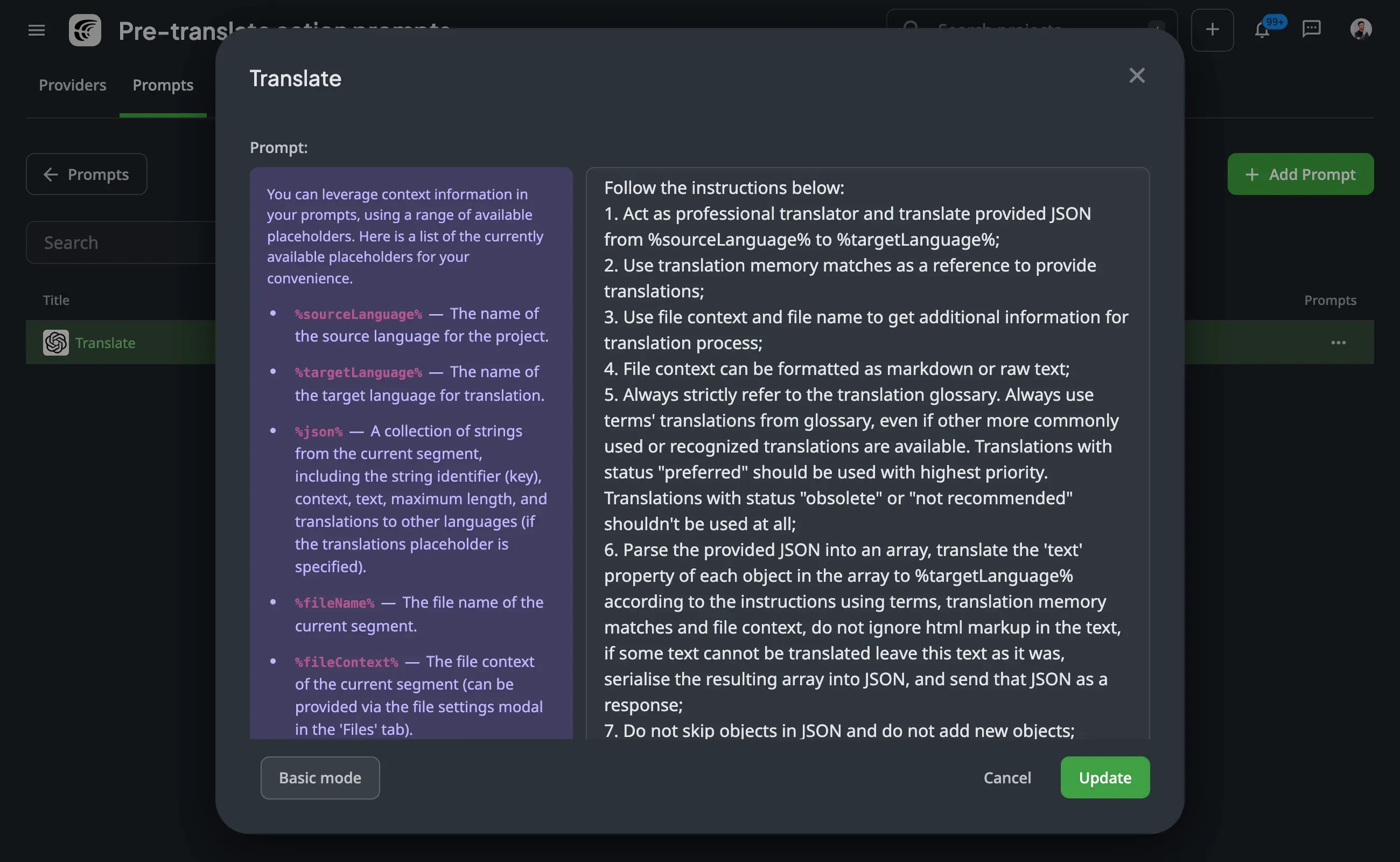
Create several prompts and experiment to see which works best for your project.
To pre-translate your content, go to Profile and choose or create a project. Go to Dashboard > Pre-translation > via AI. Then, select the desired prompt, languages, and files and start the process.
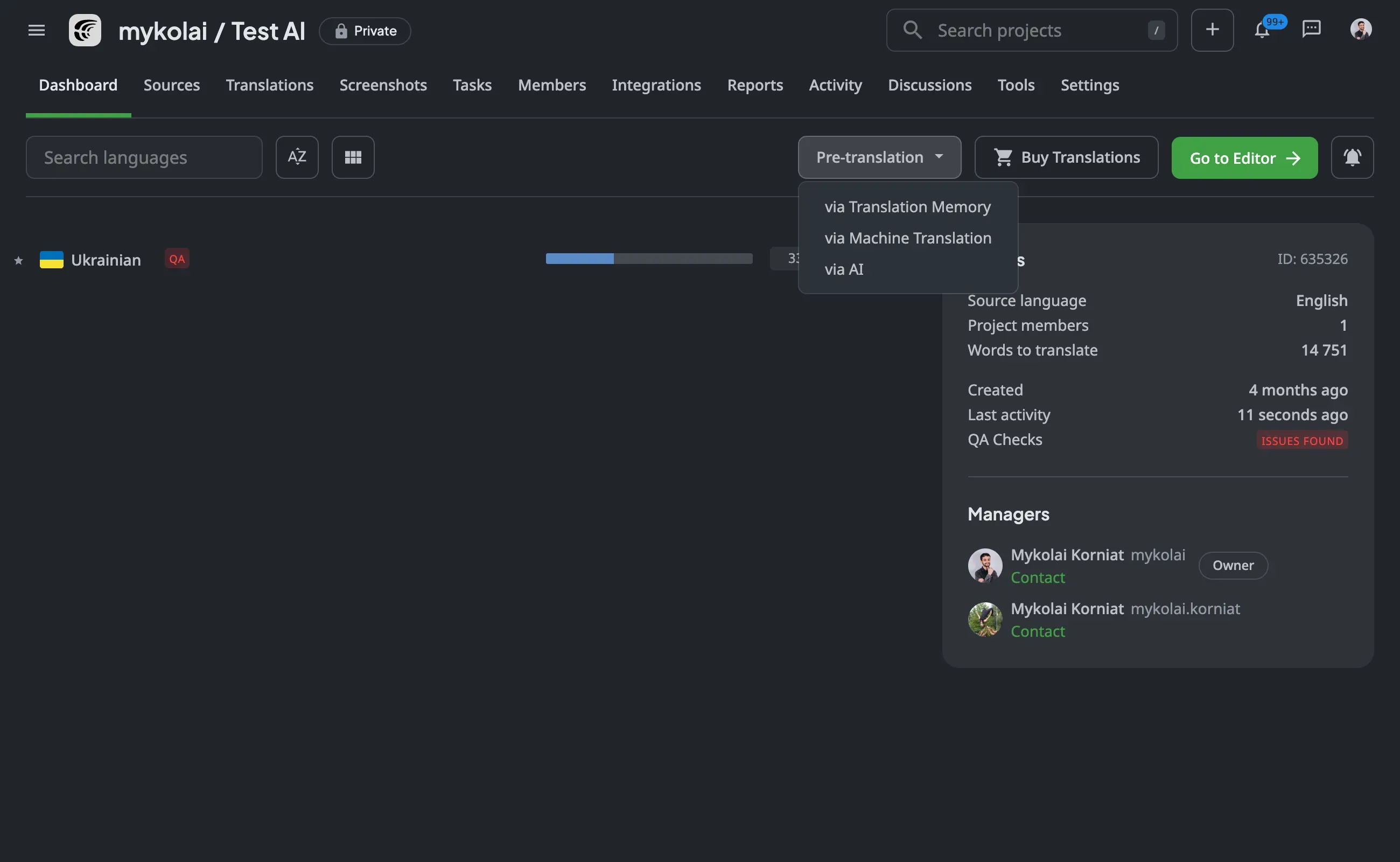
Crowdin Course on AI
Crowdin has announced the Mastering Translation AI course hosted on Udemy.
This course is designed to equip learners with the knowledge and skills needed to fully utilize the power of artificial intelligence in the localization process. From understanding the fundamentals of localization to implementing advanced AI-driven techniques, participants will learn how to adapt content for diverse audiences using AI translations.
This course offers theoretical insights and hands-on practical exercises, ensuring learners thoroughly understand the subject matter. Whether you’re a localization professional looking to enhance your skills or a newcomer eager to explore this dynamic field, the course on AI localization is your gateway to mastering the art of global communication in the digital age.
Localize your product with Crowdin
Yana Feshchuk
Yana Feshchuk is a Partnerships Marketing Manager. Her expertise lies in developing authoritative and well-researched content for the localization field.
